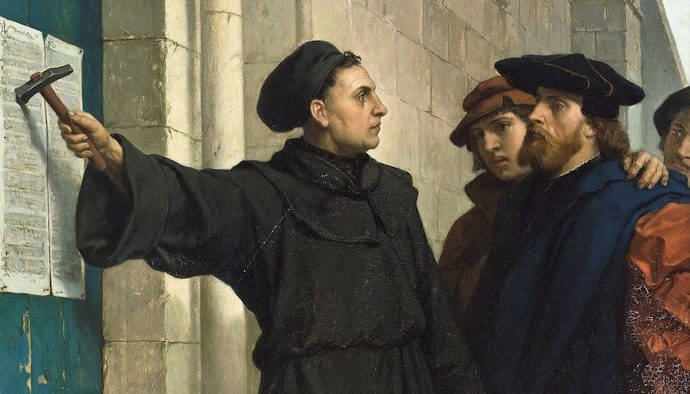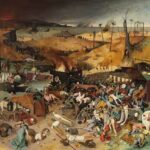Indulgences became increasingly popular in the Middle Ages as a reward for displaying piety and doing good deeds, though, doctrinally speaking, the Catholic Church stated that the indulgence was only valid for temporal punishment for sins already forgiven in the Sacrament of Confession.
The faithful asked that indulgences be given for saying their favourite prayers, doing acts of devotion, attending places of worship, and going on pilgrimage; confraternities wanted indulgences for putting on performances and processions; associations demanded that their meetings be rewarded with indulgences. Good deeds included charitable donations of money for a good cause, and money thus raised was used for many causes, both religious and civil; building projects funded by indulgences include churches, hospitals, leper colonies, schools, roads, and bridges.
However, in the later Middle Ages growth of considerable abuses occurred. Some commissaries sought to extract the maximum amount of money for each indulgence. Professional “pardoners” (quaestores in Latin) – who were sent to collect alms for a specific project – practiced the unrestricted sale of indulgences. Many of these quaestores exceeded official church doctrine, and promised rewards like salvation from eternal damnation in return for money. With the permission of the church, indulgences also became a way for Catholic rulers to fund expensive projects, such as Crusades and cathedrals, by keeping a significant portion of the money raised from indulgences in their lands. There was a tendency to forge documents declaring that indulgences had been granted. Indulgences grew to extraordinary magnitude, in terms of longevity and breadth of forgiveness.
Very soon these limits were widely exceeded. False documents were circulated with indulgences surpassing all bounds: indulgences of hundreds or even thousands of years. In 1392, more than a century before Martin Luther published the Ninety-five Theses, Pope Boniface IX wrote to the Bishop of Ferrara condemning the practice of certain members of religious orders who falsely claimed that they were authorized by the pope to forgive all sorts of sins, and obtained money from the simple-minded faithful by promising them perpetual happiness in this world and eternal glory in the next.[7] The “Butter Tower” of Rouen Cathedral earned its nickname because the money to build it was raised by the sale of indulgences allowing the use of butter during Lent.










